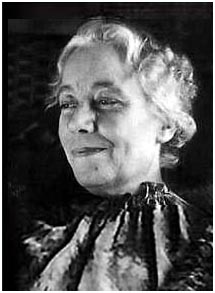History of narcissism
# History of Narcissism
The history of narcissism traces the development and understanding of narcissistic behavior and personality traits from ancient times to the present day. Narcissism, derived from the Greek myth of Narcissus, has been a subject of interest in psychology, literature, and culture.
Ancient Origins[edit | edit source]
The concept of narcissism originates from the Greek myth of Narcissus, a handsome youth who fell in love with his own reflection in a pool of water. This myth was first recorded by the Roman poet Ovid in his work "Metamorphoses." The story of Narcissus has been interpreted as a cautionary tale about the dangers of excessive self-love and vanity.
19th Century Developments[edit | edit source]
In the 19th century, the term "narcissism" began to be used in a psychological context. Havelock Ellis, a British sexologist, was one of the first to use the term "narcissism" in a clinical sense, describing it as a form of auto-eroticism. Around the same time, Paul N cke, a German psychiatrist, also used the term to describe a pathological self-absorption.
Freudian Theory[edit | edit source]
The concept of narcissism was further developed by Sigmund Freud, the founder of psychoanalysis. In his 1914 paper "On Narcissism: An Introduction," Freud introduced the idea of primary and secondary narcissism. Primary narcissism refers to the natural self-love present in infants, while secondary narcissism occurs when this self-love is redirected back onto the self in adulthood, often as a defense mechanism.
Freud's theories on narcissism influenced many subsequent psychoanalysts, including Otto Kernberg and Heinz Kohut, who expanded on the concept in their own work.
20th Century and Beyond[edit | edit source]
In the 20th century, the study of narcissism evolved with the development of narcissistic personality disorder (NPD) as a recognized mental health condition. The Diagnostic and Statistical Manual of Mental Disorders (DSM) included NPD as a distinct personality disorder, characterized by traits such as grandiosity, a need for admiration, and a lack of empathy.
The work of Heinz Kohut in the 1970s introduced the concept of "self psychology," which emphasized the role of narcissism in the development of the self. Kohut's theories suggested that healthy narcissism is essential for self-esteem and that pathological narcissism arises from disruptions in early childhood development.
Cultural Impact[edit | edit source]
Narcissism has also been explored in literature, art, and popular culture. The term "narcissism" is often used colloquially to describe individuals who are perceived as self-centered or egotistical. The rise of social media and the "selfie" culture has led to renewed interest in the concept of narcissism in contemporary society.
Related Pages[edit | edit source]
Search WikiMD
Ad.Tired of being Overweight? Try W8MD's physician weight loss program.
Semaglutide (Ozempic / Wegovy and Tirzepatide (Mounjaro / Zepbound) available.
Advertise on WikiMD
|
WikiMD's Wellness Encyclopedia |
| Let Food Be Thy Medicine Medicine Thy Food - Hippocrates |
Translate this page: - East Asian
中文,
日本,
한국어,
South Asian
हिन्दी,
தமிழ்,
తెలుగు,
Urdu,
ಕನ್ನಡ,
Southeast Asian
Indonesian,
Vietnamese,
Thai,
မြန်မာဘာသာ,
বাংলা
European
español,
Deutsch,
français,
Greek,
português do Brasil,
polski,
română,
русский,
Nederlands,
norsk,
svenska,
suomi,
Italian
Middle Eastern & African
عربى,
Turkish,
Persian,
Hebrew,
Afrikaans,
isiZulu,
Kiswahili,
Other
Bulgarian,
Hungarian,
Czech,
Swedish,
മലയാളം,
मराठी,
ਪੰਜਾਬੀ,
ગુજરાતી,
Portuguese,
Ukrainian
Medical Disclaimer: WikiMD is not a substitute for professional medical advice. The information on WikiMD is provided as an information resource only, may be incorrect, outdated or misleading, and is not to be used or relied on for any diagnostic or treatment purposes. Please consult your health care provider before making any healthcare decisions or for guidance about a specific medical condition. WikiMD expressly disclaims responsibility, and shall have no liability, for any damages, loss, injury, or liability whatsoever suffered as a result of your reliance on the information contained in this site. By visiting this site you agree to the foregoing terms and conditions, which may from time to time be changed or supplemented by WikiMD. If you do not agree to the foregoing terms and conditions, you should not enter or use this site. See full disclaimer.
Credits:Most images are courtesy of Wikimedia commons, and templates Wikipedia, licensed under CC BY SA or similar.
Contributors: Prab R. Tumpati, MD




